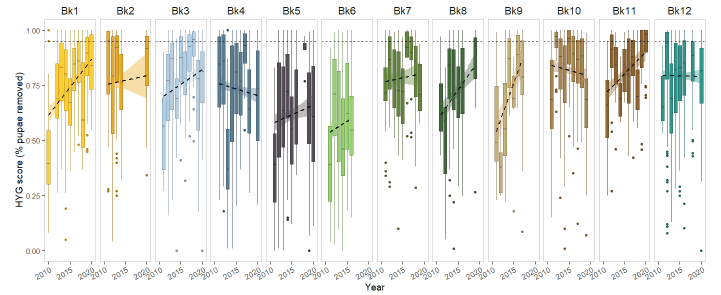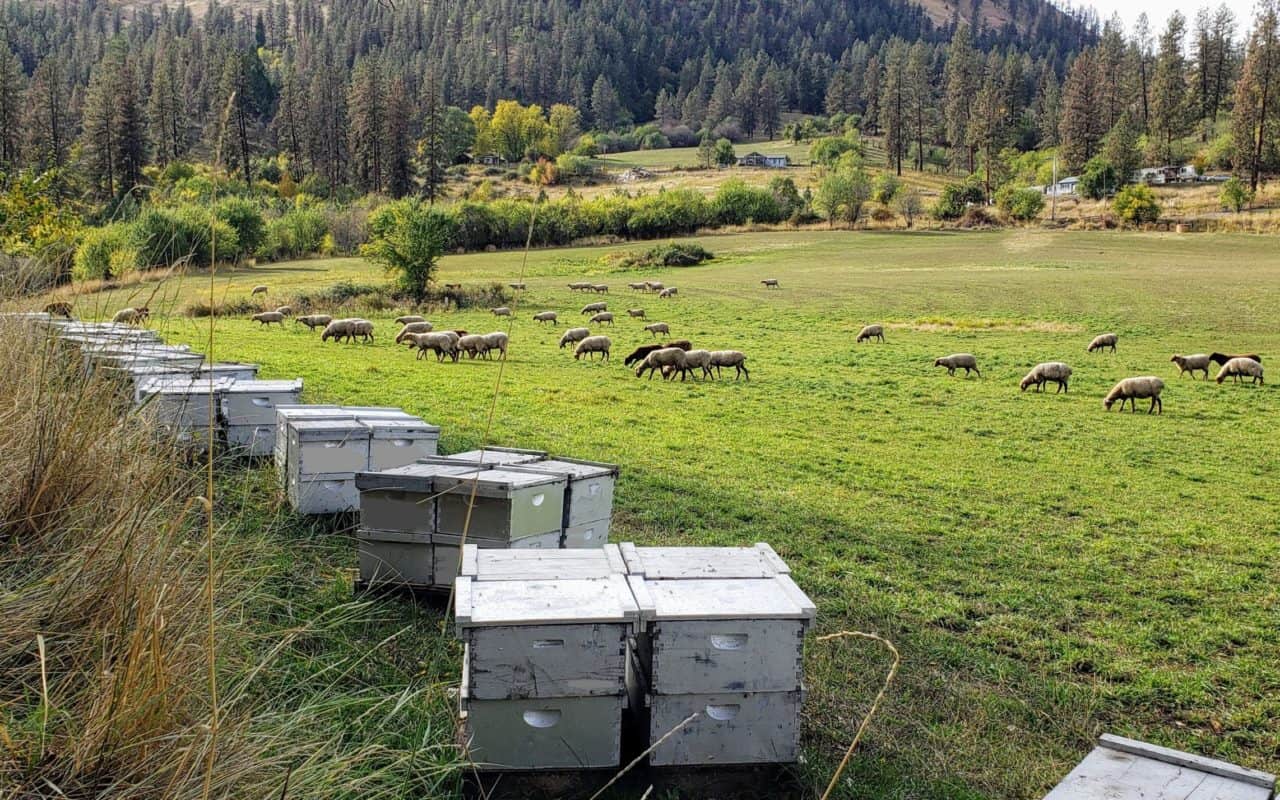The Bee Informed Partnership’s Tech Transfer Team offers a honey bee colony health monitoring program tailored to meet the specific needs facing commercial beekeepers. The Tech Transfer Team program’s Field Specialists follow commercial beekeeping operations during their yearly migrations across the country, to provide pollination services and producing honey (Figure 1). Field Specialists perform colony health inspections, on-site testing for several important honey bee pests and diseases, including the destructive Varroa mite, collect samples if additional laboratory testing is required, and consult with the participating beekeepers regarding their colony health management plan. In 2020 alone, BIP’s Tech Transfer Team collectively inspected over 13,000 colonies, put close to 100,000 miles on their work trucks and performed 10,000 alcohol washes in 18 states! Given the hours logged on the road and in the colonies, it goes without saying that BIP’s Field Specialists have a finger on the pulse of the commercial beekeeping industry. Here is a short summary of what they observed this past year.

Northwest Region – Ben Sallmann, Field Specialist
This past February (2020), California’s weather conditions were ideal for producing almonds, and bees also had access to a greater amount of forage this year compared to last. Therefore, bees brooded up really quickly and beekeepers experienced many swarms. During that same period, the Northwest region’s weather was rainy and many of those swarms resulted in failed supercedures. Not surprisingly, Varroa mite infestation levels bees also began to increase quite early this year.
European Foulbrood (EFB) was less prevalent in 2020 compared to 2019, but was still observed in some of the colonies used to pollinate blueberries. The same pattern also held true for chalkbrood infection rates. Although Nosema data are difficult to assess due to reduced Nosema testing this year, overall, samples that were analyzed showed lower spore counts compared to 2019 data.
This autumn regional Varroa levels increased considerably after queens started to shut down their egg laying activity and many of these colonies continued to decline even after applying Varroa control treatments. On the other hand, we observed fewer visible symptoms of viral infections than we would anticipate with such high Varroa loads. Overall, beekeepers who performed an early summer Varroa treatment did very well.
Great Lakes Region – Dan Wyns, Field Specialist
Most of the bees throughout the Great Lakes region have already been shipped to the southern U.S. for a couple of months or directly to California in preparation for 2021 almond pollination. Late-season colony conditions varied widely among operations, with successful Varroa control during summer and fall being a common thread among operations sending good numbers of healthy colonies into winter. Varroa infestation rates trended slightly higher all year with the most pronounced difference occurring in October this year (2.8 % vs 1.7% in October 2019).
The honey harvest reports were variable, with many beekeepers reporting average to below average crops despite good bee health. Poor yields were largely attributed to hot summer conditions and scarce rain throughout the season leading to nectar drying up from many plants. Some beekeepers were able to make up for poor summer honey with a good fall goldenrod flow.

California – Matt Hoepfinger & Rob Snyder, Field Specialists
We observed some EFB early in the year, and perhaps as a result of the early communication to our member beekeepers, many acted quickly and overall there was less EFB incidence during the rest of the season this year. Similar to observations in other regions, the beekeepers who took action on mites in the summer had lower mites in the fall.
In addition to the colony health inspections that field specialists perform throughout the year, every spring Northern California field specialists also conduct hygienic behavior testing for a number of commercial queen producers. Honey bee colonies with hygienic scores 95% and above have been shown to show significant resistance to American Foulbrood and Chalkbrood diseases and potentially lower Varroa loads. The hygienic score trends for a number of Tech Team beekeeper participants are generally increasing each year (see Figure 2 below). The queen producers then use the highest hygienic score colonies to breed from and produce the bulk of the year’s queens for the U.S. If you are interested in more information on hygienic behavior, check out Field Specialist Rob Snyder’s recent blog or watch our webinar on the topic.

South Central – Cade Houston, Field Specialist
Unlike the results from the Pacific Northwest region, we found higher incidences of EFB in the South Central Region in early 2020 compared to 2019.
Most beekeepers began with low Varroa loads in almonds this year but saw a significant increase in mite numbers as early as July. Early action to control Varroa levels often translated in lower mite numbers later in the year.

North Central Region – Nelson Williams, Field Specialist
This year Varroa loads were a bit higher than the last, starting as early as February in California during almond pollination; however, colony sizes were on par with those observed last year.
By the end of almond pollination, we saw a lot of chalkbrood. For some operations this is a recurrent, historical issue, but for others it did clear up as the season progressed. This seems to have negatively affected colony size and honey crop yields. Aside from Chalkbrood, there were no other major disease issues. Don’t miss BIP’s recent blog for a primer on Chalkbrood Disease.
Varroa loads varied, depending on the operation, distance and density of neighboring colonies. Overall, operations that started with low Varroa loads coming out of almonds remained low throughout the season.

